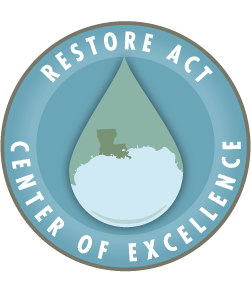Research
We conduct numerical and theoretical studies of oceanic physical and biogeochemical processes in either an idealized setting or a realistic oceanic region. Our research is motivated by the need to better predict marine environment and climate under a changing climate and human activities. We also collaborate with sea-going oceanographers to synthesize in-situ observations and computer simulations.
Air-Sea Gas Exchange
We study how fast gases goes in and out of the ocean. For the purpose, we developed a high-fidelity computer model to simulate processes critical for the process. The product of our research are simplified mathematical formulas used for prediction (A toolbox for air-sea gas exchange including an air-sea gas flux parameterization proposed in Liang et al. [2013] Courtesy of David Nicholson).
Upper Ocean Dynamics
We study the chaotic water movements, called turbulence, in the upper ocean. Turbulence is ubiquitous over the ocean, yet is one of the grand challenges in ocean physics. Recently, we have been utilizing high-fidelity physics-based computer models, together with innovative machine learning techniques to advance our understanding of upper ocean turbulent dynamics and our predictive capability of the ocean. Please visit our GitHub page for our most updated open-source models.
Ongoing Project 1: Studying the complicated dynamics in the upper ocean (NSF CAREER, Sole PI)
Ongoing Project 2: Using machine learning to model and understand turbulent mixing (ONR, Lead PI)
The Gulf of Mexico
We study the environmental issues and climate change over the Gulf of Mexico. Our current focuses include microplastics, offshore wind farm, and bottom-water hypoxia.
Ongoing Project 1: The biological effects of the northern Gulf of Mexico "deadzone" (NOAA, Lead PI)
Ongoing Project 2: Phytoplankton Dynamics (NASA, co-PI, led by Bingqing Liu)
Ongoing Project 3: Deadzone in Louisiana's Estuaries (LA-COE, Lead PI)
Marine Particle Dynamics
We study the evolution of mineral and organic particles in the water column. Those particles transports chemicals in the ocean. For organic particles, we have develop size-resolved models for sinking particles in either the Eulerian [DeVries et al. 2014] or the Lagrangian [Cram et al. 2018] framework. The models have been used to study ocean nutrient cycling. For mineral particles, we have studied and parameterized flocculation of cohesive sediments in coastal ocean turbulence [Liu et al. 2019; 2022].
Interplay between Ocean Processes and Structures
We study fluid dynamics related to the interplay between ocean processes and structures. These includes cylinders in steady and period currents [e.g., Jang et al. 2021a and 2021b]; and submerged floating structure and internal waves [Chen et al. 2023].
Ongoing Project 1: Ocean-atmosphere coupling around offshore wind farm (NSF, co-PI, led by Chao Sun)
Our research is generously funded by the following agencies:





